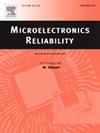Failure analysis and reliability assessment of gold-plated fuzz buttons in elevated temperature
IF 1.6
4区 工程技术
Q3 ENGINEERING, ELECTRICAL & ELECTRONIC
引用次数: 0
Abstract
Gold-plated electrical contacts are widely used in electrical and electronic systems to provide high-quality and reliable connections with minimal signal distortion or power loss. Many studies have been conducted on the failure analysis of gold-coated contacts in high-temperature environments. However, fuzz buttons, as one of the typical end-face contacts, have been less studied. This paper presents an experimental method to analyze the effects of elevated environmental temperatures on the performance of gold-plated fuzz buttons. The results show that the natural length and compression force of fuzz buttons were both shortened and reduced after the elevated temperature tests. Quantitative analysis of the microstructural changes in the test samples was conducted using characterization techniques such as optical microscopy, scanning electron microscopy (SEM), and focused ion beam (FIB) technology. The findings indicate that a large number of twin structures disappeared, the size of the precipitated phases increased, and the dislocation density decreased, leading to a reduced ability of fuzz buttons to resist plastic deformation and resulting in stress relaxation. Furthermore, a nonlinear Wiener stochastic process was used to model the degradation path of the test samples, while the generalized Eyring model was employed to describe the relationship between sample lifetimes and high temperatures. Using the maximum likelihood estimation (MLE) method, the model parameters were estimated from the integral statistics of all performance degradation data, successfully predicting the reliability of the fuzz buttons.
高温镀金绒毛扣失效分析及可靠性评估
镀金电触点广泛应用于电气和电子系统中,以最小的信号失真或功率损失提供高质量和可靠的连接。对高温环境下镀金触点的失效分析进行了大量的研究。然而,作为一种典型的端面触点,绒毛按钮的研究较少。本文提出了一种实验方法来分析环境温度升高对镀金绒毛钮扣性能的影响。结果表明,经过高温试验后,毛绒扣的自然长度和压缩力均有所缩短和减小。利用光学显微镜、扫描电子显微镜(SEM)和聚焦离子束(FIB)等表征技术对测试样品的微观结构变化进行了定量分析。结果表明:大量孪晶组织消失,析出相尺寸增大,位错密度降低,导致绒扣抗塑性变形能力降低,导致应力松弛;采用非线性Wiener随机过程来描述试样的降解路径,采用广义Eyring模型来描述试样寿命与高温的关系。利用最大似然估计(MLE)方法,从所有性能退化数据的积分统计中估计模型参数,成功地预测了模糊按钮的可靠性。
本文章由计算机程序翻译,如有差异,请以英文原文为准。
求助全文
约1分钟内获得全文
求助全文
来源期刊

Microelectronics Reliability
工程技术-工程:电子与电气
CiteScore
3.30
自引率
12.50%
发文量
342
审稿时长
68 days
期刊介绍:
Microelectronics Reliability, is dedicated to disseminating the latest research results and related information on the reliability of microelectronic devices, circuits and systems, from materials, process and manufacturing, to design, testing and operation. The coverage of the journal includes the following topics: measurement, understanding and analysis; evaluation and prediction; modelling and simulation; methodologies and mitigation. Papers which combine reliability with other important areas of microelectronics engineering, such as design, fabrication, integration, testing, and field operation will also be welcome, and practical papers reporting case studies in the field and specific application domains are particularly encouraged.
Most accepted papers will be published as Research Papers, describing significant advances and completed work. Papers reviewing important developing topics of general interest may be accepted for publication as Review Papers. Urgent communications of a more preliminary nature and short reports on completed practical work of current interest may be considered for publication as Research Notes. All contributions are subject to peer review by leading experts in the field.
 求助内容:
求助内容: 应助结果提醒方式:
应助结果提醒方式:


